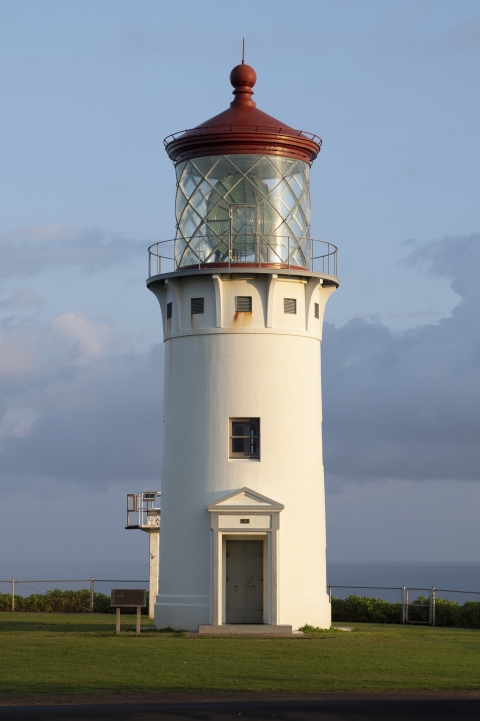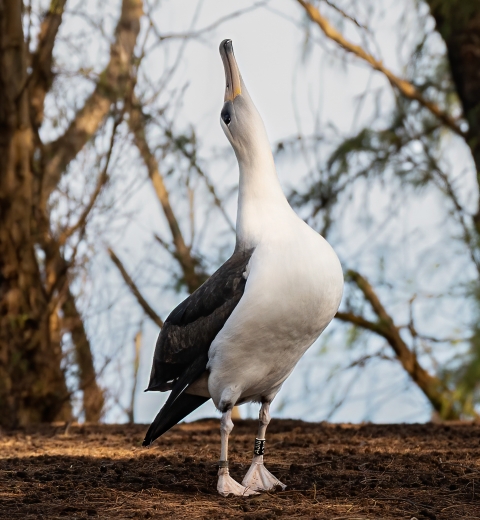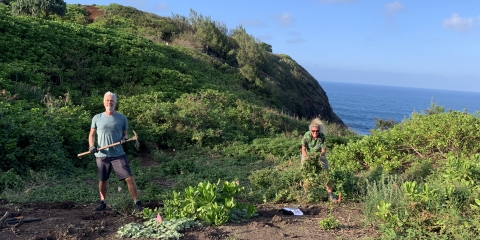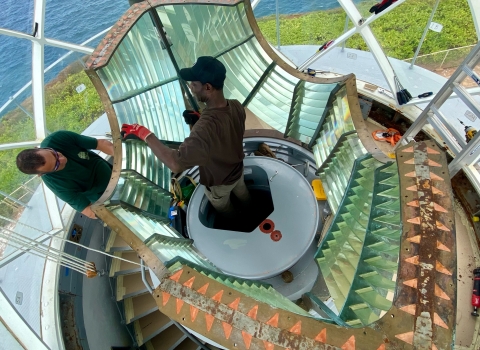

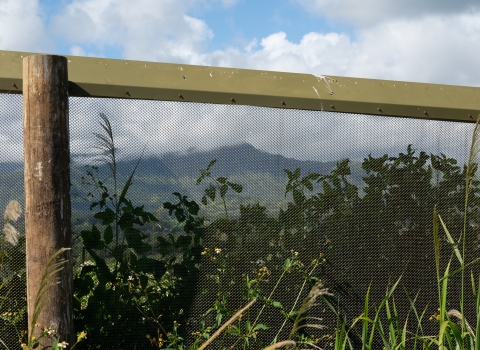
Visit Us
Kīlauea Point National Wildlife Refuge is located on the northern-most point of the main Hawaiian Islands on a portion of the former Kīlauea volcanic vent and includes spectacular views from atop a 180-foot ocean bluff.
The Refuge is the best places in the state to view seabirds rarely seen from land, like the red-footed booby (ʻā in Hawaiian), great frigate bird ('iwa), and Laysan albatross (mōlī). The world's rarest goose and Hawai‘i's state bird, the Hawaiian goose (nēnē) is a frequent sight as well. Visitors also have a chance to view spinner dolphins (nai‘a), Hawaiian monk seals (‘Ilio holo i ka uaua), green sea turtles (honu), and humpback whales (koholā, October - April) in the water below. Native Hawaiian coastal plants are also abundant.
The Refuge is also home to the Daniel K. Inouye Kīlauea Point Lighthouse, whose 2nd order bivalve Fresnel lens lit the way for seafarers. The lighthouse is part of the Kīlauea Point Light Station, listed on the National Register of Historic Places. The lighthouse played a key role in the first trans-Pacific flight from the West Coast to Hawai‘i and has been part of Kaua‘i’s history since its completion in 1913.
Location and Contact Information
Our Species
We are home to a variety of seabirds, songbirds, native plants, and the nēnē, or Hawaiian goose (Branta sandvicensis). To learn more go to our species page.
Worldwide, human expansion and development has caused dramatic declines in native plants, animals, and habitats. The National Wildlife Refuge system was established in 1903 to protect, restore, and conserve wildlife populations and their habitats.
Currently, National Wildlife Refuges encompass the largest acreage of public lands and waters set aside for fish, wildlife, and plants in the world – with more than 150 million acres and at least one National Wildlife Refuge in every state.
Get Involved
Volunteer with us
Our volunteers, Friends Group, and partners are integral to Kīlauea Point National Wildlife Refuge management. Volunteers support various refuge programs including native habitat management, natural history and cultural interpretation, wildlife monitoring, and more.
We are currently looking for new people to join our 'ohana (family). Click view more opportunities to learn more and to contact our volunteer coordinator.




